windows tips and tricks

Recent Posts
Blog Link
Tips Of The Day
Thursday, July 2, 2009
How to disable User Account Control?
Without any doubt is Vista's most irritating tool the User Account Control (UAC). The User Account Control takes care that Windows asks permission to several system sources over and over again.
I have to admit that this standard setting helps you to keep your computer clean, but do you really want to give permission for every small setting change, like changing the Windows' standard font?
I think your answer is NO!
Monday, April 27, 2009
You cannot access shared files and folders or browse computers in the workgroup with Windows XP
- You cannot access shared folders or files.
- You cannot locate other computers in the workgroup.
- You receive the following error message when you double-click the workgroup in My Network Places:Workgroup Name is not accessible. You may not have permission to use this network resource.
This behavior may occur if all the following conditions are true:
- NetBIOS over TCP/IP is not turned on (enabled) on one or more computers in the workgroup.
- The Computer Browser service is not started or is turned off on one or more computers in the workgroup.
Method 1: Enable NetBIOS over TCP/IP and start the Computer Browser service
To resolve this issue, make sure that NetBIOS over TCP/IP is turned on and that the Computer Browser service is running on each computer in the workgroup. To do this, follow these steps.Step 1: Enable NetBIOS over TCP/IP
- Click Start, click Control Panel, and then click Network and Internet Connections.
- Click Network Connections.
- Right-click Local Area Connection, and then click Properties.
- Click Internet Protocol (TCP/IP), and then click Properties.
- Click the General tab, and then click Advanced.
- Click the WINS tab.
- Under NetBIOS setting, click Enable NetBIOS over TCP/IP, and then click OK two times.
- Click Close to close the Local Area Connection Properties dialog box.
- Close the Network Connections window.
Step 2: Start the Computer Browser service
- Click Start, right-click My Computer, and then click Manage.
- Double-click Services and Applications.
- Double-click Services.
- On the right side, right-click Computer Browser, and then click Start.
- Close the Computer Management window.
Method 2: Install File and Print Sharing and make sure that it is not blocked by Windows Firewall
Step 1: Install File and Print Sharing for Microsoft Networks
- Click Start, click Run, type ncpa.cpl, and then click OK.
- Right-click Local Area Connection, and then click Properties.
- Click the General tab, and then click Install.
- Click Service, and then click Add.
- In the Network Service list, click File and Print Sharing for Microsoft Networks, and then click OK.
- Click Close.
Step 2: Make sure that File and Printer Sharing is not blocked by Windows Firewall
- Click Start, click Run, type firewall.cpl, and then click OK.
- On the General tab, make sure that the Don't allow exceptions check box is not selected.
- Click the Exceptions tab.
- On the Exceptions tab, make sure that the File and Printer Sharing check box is selected, and then click OK.
Wednesday, April 8, 2009
Windows XP Shutdown Much Faster
One of the inconveniences that XP brings is it sometimes takes a lifetime before it fully shuts down. You may be wondering why I still post topics on XP, it is because there are still a lot of people that are still using XP on their computers, and I guess some of them are experiencing the eternal shutdown problem on their XP machines. The main reason for this problem is that one or more application is hanging up to 20 seconds while XP tries to shutdown. To resolve this I have here a simple registry tweak to force Windows XP to shut down more quickly. Before you jump into editing your registry it is highly advisable to first create backup of your registry.
step1: The first thing you need to do is to open your registry editor. Click Start –> Go to RUN and type REGEDIT
step2: Navigate to the following keys HKEY_CURRENT_USER \ Control Panel \ Desktop
Scroll Down and look for HungAppTimeout and change the default 5000 to 1000 then click OK
step3: Scroll down to WaitToKillAppTimeout and change it’s value from 20000 to 1000 then click OK. Don’t close your registry editor yet, we have still more values to change.
step4: Go to HKEY_LOCAL_MACHINE \ System \ CurrentControlSet \ Control and double click on WaitToKillServiceTimeout then change it’s value to 1000 then click OK.
step5: Now, navigate to HKEY_USERS \ DEFAULT \ Control Panel \ Desktop and change HungAppTimeout value to 1000 and click OK.
step6: Scroll down to WaitToKillAppTimeout change it to 1000 and click OK.
Your done, your XP will now shutdown much more quicker.
You can put any values that you prefer but you must make sure all values are uniform on all the settings.
Monday, March 23, 2009
Configure Windows Mail to connect to Gmail
 Continuing our “How to” series on configuring Windows Mail for different e-mail providers, today we are going to show you, step by step, how to configure Windows Mail to connect to your Gmail account. As you might now, Gmail offers free POP3 support for all accounts. However, in order to use it, you might need to activate it from the Gmail web interface.
Continuing our “How to” series on configuring Windows Mail for different e-mail providers, today we are going to show you, step by step, how to configure Windows Mail to connect to your Gmail account. As you might now, Gmail offers free POP3 support for all accounts. However, in order to use it, you might need to activate it from the Gmail web interface.
How to activate POP3 in Gmail
Before starting, please check if POP3 is activated for your Gmail account. To check, login to your account and go to Settings -> Forwarding and POP/IMAP.

Now activate your POP3 service by selecting one of these two options: Enable POP for all mail, or Enable POP for mail that arrives from now on.

How to configure Windows Mail
First, start Windows Mail. Go to the Tools menu and then click on the Accounts button as shown in the picture below.
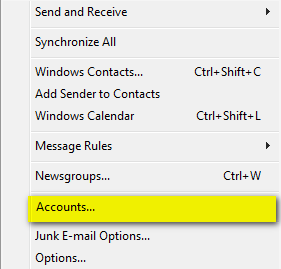
Then, click on the Add button.
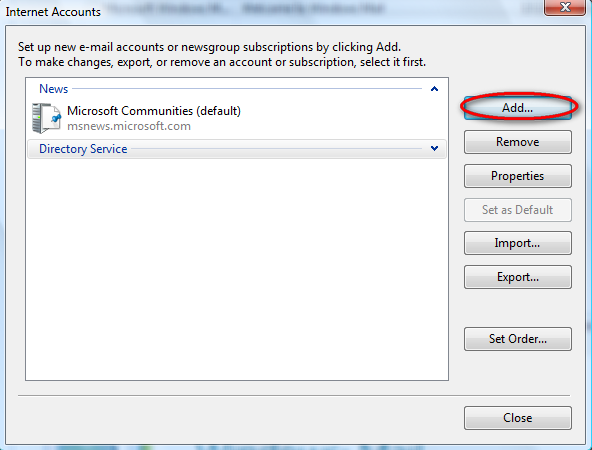
Select the E-mail Account option and click on Next.
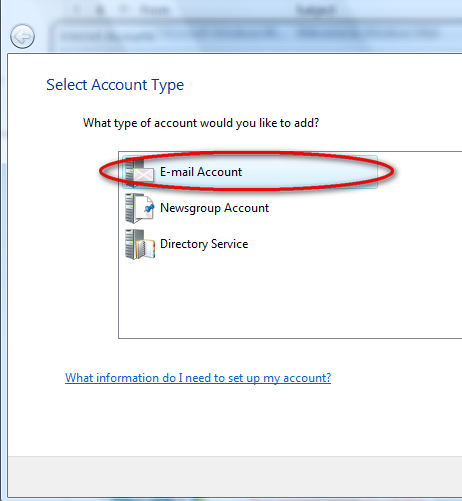
Next you can choose the display name that will be shown in every outgoing e-mail message. Type it and go to the next window.
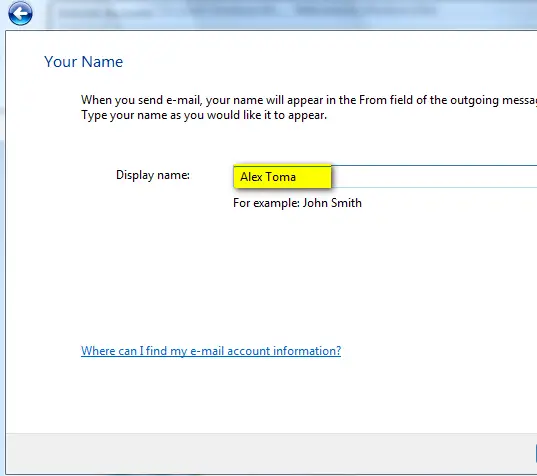
Now, you will be asked for your e-mail address. Type it and click on Next.
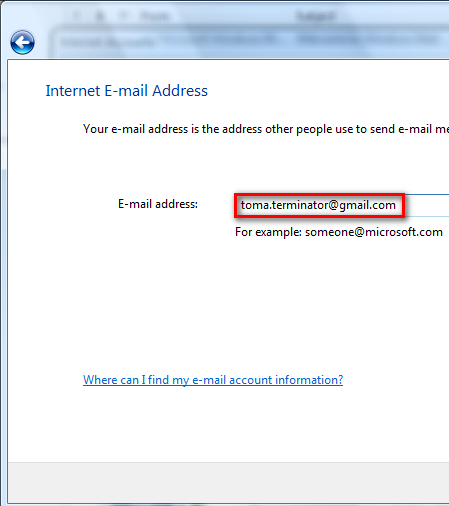
In the next window you have to setup the e-mail servers. From the Incoming e-mail server drop-down list, select POP3. Then, enter the Incoming & Outgoing server names as shown in the picture below and check the Outgoing server requires authentication option. When you are done, click on Next.
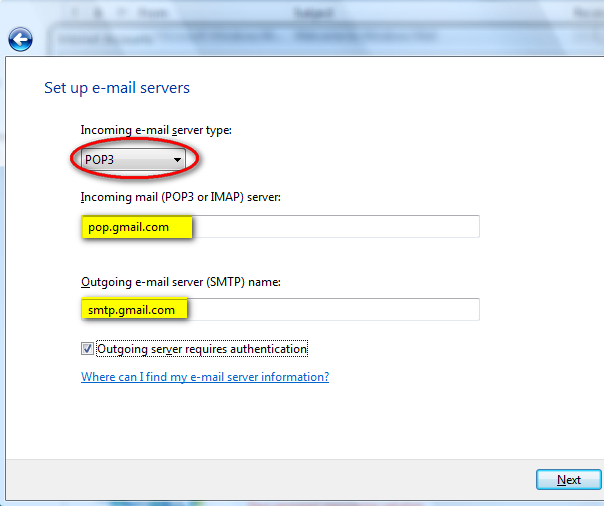
In the Internet Mail Logon window you have to enter your e-mail address and password. Also, for your ease-of-use, check the Remember password option and then click on Next.
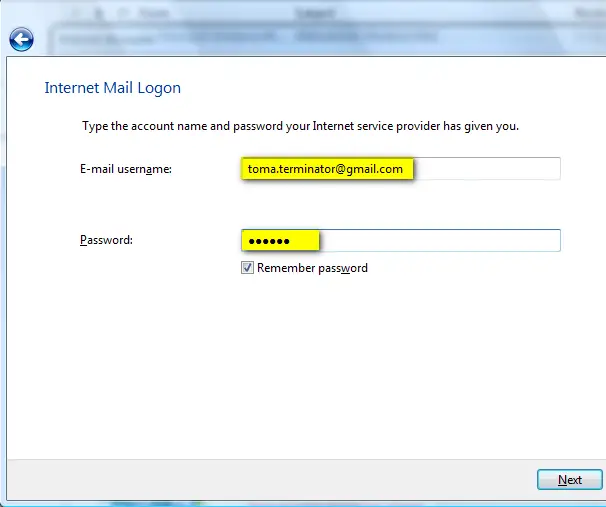
You are now almost done. Check the Do not download my e-mail at this time option as you will have to make some other minor adjustments. Then, click on the Finish button.
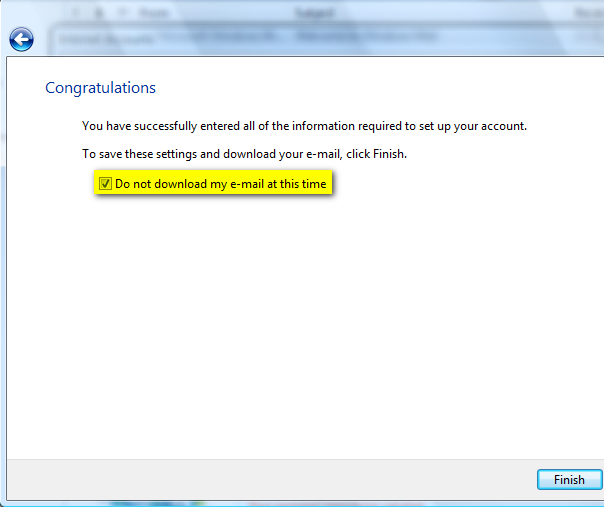
The Internet Accounts window should be opened. Select your Gmail account and click on Properties.
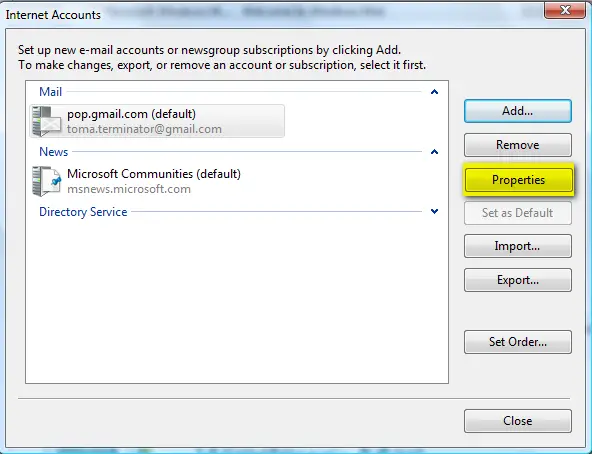
Go to the Advanced tab and type 465 as the port for the SMTP server and 995 for the POP3 server. Also, please note that you have to check the option that says “This server requires a secure connection (SSL)” for both POP3 and SMTP.
If you want your messages to be left on the Gmail servers as backup, then don’t forget to check the option that says Leave a copy of messages on server. If you do not check it, when a message is downloaded it is automatically removed from the Gmail servers. When finished, click on OK.
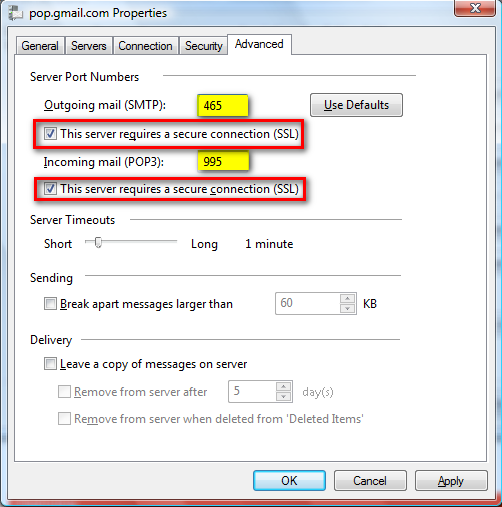
Windows Mail is now configured to access your Gmail account and download your messages. Press the Send/Receive button and the download will start.

Saturday, March 21, 2009
Work with shortcuts
You can’t be in more than one place at a time, but—with shortcuts—your files can. Shortcuts are links to programs, documents, files, or Web sites that you can add to your desktop or Start menu. Rather than searching through folders or the Internet every time you want to open a particular file or Web site, simply create a shortcut.
You may not know it, but you use shortcuts all the time. When you click the Start menu, every icon you see is a shortcut. The icons on your desktop are also shortcuts. Without these shortcuts (which are created by Windows or the programs you install), you would have to do a lot of extra work every time you wanted to open a program or empty your recycle bin.
You open a shortcut exactly as you would open a file: by double-clicking it. When you open a shortcut, Windows locates and opens the original file. If you delete the shortcut, the original file is still right where it was.
Find out how to:
| • | |
| • | |
| • | |
| • |
How to add a shortcut to your desktop
If you use your desktop frequently, you should consider adding shortcuts to your favorite files to your desktop.
To add a shortcut to a file on your desktop
1. | Browse your My Documents folder and subfolders to find the file you want to create a shortcut for. |
2. | Right-click the file you want to link to from your desktop, click Send To, and then click Desktop. |

Your file stays in the same place, but you now have a shortcut to that file on your desktop. Notice that the icon on your desktop has an arrow in the lower-left corner. This arrow indicates that you are clicking a shortcut and not the actual file.
![]()
If your desktop gets cluttered with too many shortcuts, you can organize and clean up your desktop.
How to add a shortcut to your Start menu
In addition to being able to add shortcuts to your desktop, you can also add shortcuts on your Start menu. Shortcuts to your favorite files can appear alongside your programs.
To add a shortcut to your Start menu
1. | Browse your My Documents folder and subfolders to find the file you want to create a shortcut for. |
2. | Drag the file to the Start button and hold it for about one second. |
3. | When the Start menu opens, drag the file to the location where you want to add it. |
4. | Drop the file where you want the shortcut, and a shortcut icon appears. |

How to add a shortcut to a Web site
In addition to linking to files on your own computer, you can create shortcuts to your favorite Web sites. Double-click the shortcut, and the Web site will open in your browser.
To create a shortcut to a Web site
1. | Open the Web site in Microsoft Internet Explorer. |
2. | Click and drag the Internet Explorer icon in the Address bar (next to the URL) to your desktop or to the Start menu.
For more detailed instructions, watch the video Creating a desktop shortcut to a Web site. Watching the video requires that you have Windows Media Player. |
How to change the icons in your shortcuts
Shortcuts include a picture called an icon, which can help you find a program or file faster. For example, the My Computer shortcut shows a computer icon, and the Recycle Bin shortcut shows a trash can icon.
![]()
When you change your Windows theme, the new theme might include a set of custom icons that complement the look of the new desktop. For example, a jungle theme might change your My Computer icon to a giraffe. If you want, you can change one or more icons to something more interesting to you.
The method for changing an icon depends on the icon type. You can:
| • | |
| • |
How to change system icons
To change system icons
1. | Right-click your desktop, and then click Properties.
|
2. | In the Display Properties dialog box, click the Desktop tab. Then click Customize Desktop.
|
3. | On the General tab, click the icon you want to change. Then, click Change Icon.
|
4. | Click the Browse button, and select the folder to which you saved your icons. Click the View Menu button, and then click Thumbnails.
|
5. | Click the icon you want to use, and then click Open.
|
6. | Click OK.
|
7. | Repeat steps 3 through 6 to change other icons. When you are finished changing your icons, click OK twice.
|
How to change non-system icons
To change icons other than system icons
1. | Find icons that suit your sense of style. For example, enter "download Windows icons" in your favorite Internet search tool. |
2. | Download the icons and save them to your computer. |
3. | Right-click the shortcut for which you want to change the icon, and then click Properties.
|
4. | On the Shortcut tab in the Internet Explorer Properties dialog box, click Change Icon.
|
5. | Click the Browse button.
|
6. | Select the folder to which you saved your icons. Click the View Menu button, and then click Thumbnails.
|
7. | Select the icon you want to use, and then click Open.
|
8. | Click OK.
|
9. | In the Internet Explorer Properties dialog box, click OK again.
|
10. | Repeat steps 3 through 9 to change additional icons. Source: http://www.microsoft.com/ |
Simplify using your mouse: change double-click to single-click
Simplify using your mouse: change double-click to single-click
When you browse the Web with Microsoft Internet Explorer, links open with a single click. Yet, when you browse My Computer or My Documents, a single click lets you select a file or folder, but you have to double-click to open it.
If you'd rather single-click to open files and folders, you can change the setting on your mouse (don't worry, this process doesn't require any double clicks).
To change the settings on your mouse
1. | Click Start, and then click My Computer.
|
2. | Click Tools, and then click Folder Options.
|
3. | Click Single-click to open an item. Then, click OK.
|
Now you can navigate folders and open files with a single rather than a double click. If you need to select a file, simply hold your mouse over the file for a few seconds without clicking.
Thursday, March 12, 2009
10.11.12 Understanding System Restore
Using System Restore in previous versions of Windows has been something of a gamble. There's no way of telling which applications or drivers it might affect - you just have to try it and see.
Windows 7 is different. Right-click Computer, select Properties > System Protection > System Restore > Next, and choose the restore point you'd like to use. Click the new button to 'Scan for affected programs' and Windows will tell you which (if any) programs and drivers will be deleted or recovered by selecting this restore point.
11. Set the time zone
System administrators will appreciate the new command line tzutil.exe utility, which lets you set a PC's time zone from scripts. If you wanted to set a PC to Greenwich Mean Time, for instance, you'd use the command
tzutil /s "gmt standard time"
The command "tzutil /g" displays the current time zone, "tzutil /l" lists all possible time zones, and "tzutil /?" displays details on how the command works.
12. Calibrate your screen
The colours you see on your screen will vary depending on your monitor, graphics cards settings, lighting and more, yet most people use the same default Windows colour profile. And that means a digital photo you think looks perfect might appear very poor to everybody else. Fortunately Windows 7 now provides a Display Colour Calibration Wizard that helps you properly set up your brightness, contrast and colour settings, and a ClearType tuner to ensure text is crisp and sharp. Click Start, type DCCW and press [Enter] to give it a try.
9. Automatic PC clean up
If inexperienced PC users sometimes access your system then you'll know that, well, this can cause problems. Leave them alone for too long and they'll mess up your settings, install dubious programs, delete important files and cause all kinds of havoc. But Microsoft feels your pain, and Windows 7 will include a possible solution: PC Safeguard. This lets your less technical users log on, play games, use the browser or chat on an instant messenger, say, just as normal. But when they log off, any settings they've changed are undone, and any files they've saved are deleted. Which means it's much more difficult to mess up your PC.
This isn't a new technology. Microsoft have made their Shared Computer Toolkit (aka Windows SteadyState) freely available for years, and this does exactly the same thing (it's more configurable, too). This is the first time it's been fully integrated with Windows, though, which makes it much easier to use.
To give PC Safeguard a try, go to Control Panel > User Accounts and Family Safety > User Accounts > Manage another account > Create a new account. Enter an account name, click Create, then click the account, select Set Up PC Safeguard > Turn on PC Safeguard > Apply. Log on as that user, try downloading and installing a program, then restart and log on again to confirm that the software has gone.
6,7,8 Take control
Tired of the kids installing dubious software or running applications you'd rather they left alone? AppLocker is a new Windows 7 feature that ensures users can only run the programs you specify. Don't worry, that's easier to set up than it sounds: you can create a rule to allow everything signed by a particular publisher, so choose Microsoft, say, and that one rule will let you run all signed Microsoft applications. Launch GPEDIT.MSC and go to Computer Configuration > Windows Settings > Security Settings > Application Control Policies > AppLocker to get a feel for how this works.
7. Calculate more
At first glance the Windows 7 calculator looks just like Vista's version, but explore the Mode menu and you'll see powerful new Statistics and Programmer views. And if you're clueless about bitwise manipulation, then try the Options menu instead. This offers many different unit conversions (length, weight, volume and more), date calculations (how many days between two dates?), and spreadsheet-type templates to help you calculate vehicle mileage, mortgage rates and more.
Don't take any Windows 7 applet at face value, then - there are some very powerful new features hidden in the background. Be sure to explore every option in all Windows applets to ensure you don't miss anything important.
8. Switch to a projector
Windows 7 now provides a standard way to switch your display from one monitor to another, or a projector - just press Win+P or run DisplaySwitch.exe and choose your preferred display. (This will have no effect if you've only one display connected.)
4. 5 Troubleshoot problems
If some part of Windows 7 is behaving strangely, and you don't know why, then click Control Panel > Find and fix problems (or 'Troubleshooting') to access the new troubleshooting packs. These are simple wizards that will resolve common problems, check your settings, clean up your system and more.
5. Startup repair
Windows 7 is more reliable than we'd expect from a beta, but you still might run into problems, and the worst might stop it from booting. Even into Safe Mode. And that's very bad news if you downloaded Windows 7, as you've no CD or DVD to use for re-installation. Which is why you need to click Start > Maintenance > Create a System Repair Disc, right now, and let Windows 7 build a bootable emergency disc. If the worst does happen then it could be the only way to get your PC running again.
3. Create and mount VHD files
Microsoft's Virtual PC creates its virtual machine hard drives in VHD files, and Windows 7 can now mount these directly so you can access them in the host system. Click Start, type diskmgmt.msc and press [Enter], then click Action > Attach VHD and choose the file you'd like to mount. It will then appear as a virtual drive in Explorer and can be accessed, copied or written just like any other drive.
Click Action > Create VHD and you can now create a new virtual drive of your own (right-click it, select Initialise Disk, and after it's set up right-click the unallocated space and select New Simple Volume to set this up). Again, you'll be left with a virtual drive that behaves just like any other, where you can drag and drop files, install programs, test partitioning software or do whatever you like. But it's actually just this VHD file on your real hard drive which you can easily back up or share with others. Right-click the disk (that's the left-hand label that says "Disk 2" or whatever) and select Detach VHD to remove it.
The command line DISKPART utility has also been upgraded with tools to detach a VHD file, and an EXPAND command to increase a virtual disk's maximum size. Don't play around with this unless you know what you're doing, though - it's all too easy to trash your system.
2. Burn images
1. Problem Steps Recorder
As the local PC guru you're probably very used to friends and family asking for help with their computer problems, yet having no idea how to clearly describe what's going on. It's frustrating, but Microsoft feels your pain, and Windows 7 will include an excellent new solution in the Problem Steps Recorder.
When any app starts misbehaving under Windows 7 then all your friends need do is click Start, type PSR and press [Enter], then click Start Record. If they then work through whatever they're doing then the Problem Steps Recorder will record every click and keypress, take screen grabs, and package everything up into a single zipped MHTML file when they're finished, ready for emailing to you. It's quick, easy and effective, and will save you hours of troubleshooting time.
Friday, February 27, 2009
Move or Copy Files at Will
- To copy a file under any situation, hold the Ctrl key while dragging.
- To move a file under any situation, hold the Shift key while dragging.
- To choose what happens to dragged files, drag them with the right mouse-button, and a menu will appear when the files are dropped.
- Note: Notice that the mouse cursor changes depending on the action being taken. A small plus (+) appears when copying, and a curved arrow appears when creating a shortcut.
- Note: There is no way to set the default action when dragging files - a glaring omission.
- Note: A handy and well-designed utility, WinZIP, utilizes the right-drag menu to ZIP and unZIP files (version 6.0 and later).
Copy or Move to Specified Path
Display an index all the files on your system
Windows Vista:
- Open Windows Explorer, select Computer in the tree, and type *.* in the Search box on the upper-right side of the window.
Windows Me/2000/2003/XP:
- Select Search and then For Files or Folders from the Start Menu, select a drive (or use Local Hard Drives for all drives), and click Search Now without specifying anything in the Named field.
Windows 95/98:
- Select Find and then Files or Folders from the Start Menu, select a drive (or use My Computer for all drives), and click Find Now without specifying anything in the Named field. Note that Windowx 95 and Windows 98 have an arbitrary limit of 10,000 entries, so you may need to limit your search, or upgrade to a newer version of Windows (see below).
After the search:
- You can then sort the results by clicking on the appropriate column heading (useful for finding the largest or most recent file on your system).
- To save the results, you'll need the Copy to Clipboard as Filename utility (one of Microsoft's PowerToys). This allows you to select all the files in the results list, right-click, select Send To and then Clipboard as Filename. You can then paste the listings into a text editor, such as Notepad, for saving and printing.
How do I know if I can delete a specific file?
- Check the date of the file (right-click on it and select Properties) - if it's recent, it's most likely being used.
- If the file is large, and you want to know if you can delete it, try renaming it or moving it to another directory before to see if everything still works before you delete it.
- No, you shouldn't delete WIN386.SWP (your swap file in Win95/98/Me) or PAGEFILE.SYS (your swap file in Windows 2000/2003/XP/Vista).
Downloading Windows Updates
Make a Duplicate of a File
On the desktop, or in an open folder window:
- Hold Ctrl, and drag the file from one part of the window to another part of the same window.
In Explorer:
- Explorer won't let you do this, but you can Ctrl-drag a file from the right pane, and drop it on the same folder in the left pane.
In either case:
- You can also use the right mouse button to drag the file from one part of the window to another part of the same window, and select Copy Here.
- The duplicate of a file called, say, MyFile.TXT would be automatically named Copy of MyFile.TXT.
- For keyboard users; press Ctrl-c and then Ctrl-v to create a duplicate of a file using the clipboard.
Duplicate a group of files:
- Obtain and install Power Rename, part of O'Reilly Utilities and Creative Element Power Tools.
- It lets you rename files in a multitude of ways, including making duplicates (renaming without removing the original).
Learn to Explore with Folders
- Select Options from the View menu in My Computer, select Custom, and then click Settings.
- From the Browse folders as follows section, choose the option that you want.
- Even though you've chosen one option, you can hold Ctrl while double-clicking folder icons to use the other option.
Other keys that work with either setting:
- Hold Alt while double-clicking on a file or folder to view the Properties window for that object.
- Hold Shift while double-clicking on a folder to open Explorer at that location (careful when using this as Shift is also used to select multiple files).
- Press Backspace in an open folder to go to the parent folder.
- Hold Shift while clicking on the close button (X) to close all open folders.
- A shortcut for choosing a new program to be used with a certain file type is to hold the Shift key while right-clicking on a file, and choosing Open With...
Run a Shortcut from the Command Prompt
- Type the following: start "c:\directory\Shortcut to Someprog.exe.lnk", where c:\directory is the full path containing the shortcut, and Shortcut to Someprog.exe.lnk is the filename of the shortcut.
Print Out a Directory Listing
Solution #1:
- Obtain and install the Copy to Clipboard as Filename utility.
- This allows you to select all the files in a folder, in Explorer, or in the Find window results list, right-click on them, select Send To and then Clipboard as Filename.
- You can then paste the listings into a text editor, such as Notepad, for printing or saving.
A similar tool is also available as part of O'Reilly Utilities and Creative Element Power Tools.
Solution #2:
- Open a text editor, such as Notepad, and type the following lines into a new document: (assuming the printer you wish to use is connected to printer port #1).
CD %1
DIR >LPT1
- Save the two-line file into your Windows\Command folder, and call it PRINTDIR.BAT.
- Find the file in Explorer, right click on it, and select Properties.
- Click on the Program tab, turn on the Close on Exit option, choose Minimized from the Run list, and click Ok.
- Next, run the Registry Editor (REGEDIT.EXE).
- Open My Computer\ HKEY_CLASSES_ROOT\ Directory\ shell.
- Select New from the Edit menu, and then select Key.
- Type Print for the name of this new key, and press Enter.
- Highlight the new Print key, select New from the Edit menu, and then select Key again.
- Type command for the name of this new key, and press Enter.
- Double-click on the (default) value in the right pane, and type C:\Windows\Command\PRINTDIR.BAT (assuming that C:\Windows\ is your Windows folder).
- From now on, when you right-click on a folder icon, you can click Print to print its contents.
- Note: this assumes that your printer is connected to the LPT1 port, which is true for most users. However, if your printer is connected over a network or you have more than one printer, you need to change LPT1 to the correct port.
Sort by Extension in Explorer
Set Defaults in Explorer
- Open a folder, and configure the sort order, icon size, column widths, etc. to your liking.
- Then, select Folder Options from Explorer's Tools menu (it's in the View menu in Windows 98), and choose the View tab.
- Click Like Current Folder and then click Ok.
Go Directly to Device Manager
Windows 95/98/Me
- You can open Device Manager by double-clicking on the System icon in Control Panel, and choosing the Device Manager tab. It is also accessible by right-clicking on My Computer, selecting Properties, and selecting the Device Manager tab. Getting to the Device Manager this can require up to six mouse clicks, but there is an easier way.
- Open an Explorer window, and select your Start Menu folder (under your Windows directory). It doesn't have to go here, but it's as good a place as any.
- Select New and then Shortcut from the File Menu.
- In the field labelled Command Line, type C:\WINDOWS\CONTROL.EXE Sysdm.cpl, System,1 (replace C:\WINDOWS\ with your Windows directory, if different).
- Click Next, type Device Manager for the name of this shortcut, and press Finish when you're done.
- There will now be a shortcut directly to Device Manager in your Start Menu.
Windows 2000/2003/XP/Vista
- You can open Device Manager by double-clicking on the System icon in Control Panel, choosing the Hardware tab, and clicking Device Manager.
- Fortunately, Device Manager can be more easily run by launching devmgmt.msc - just create a shortcut to the file (as described above), and launch it at any time.
Force Explorer to Start With the Folder You Want
- Open Explorer, and go to your Start Menu folder.
- Find the shortcut for Explorer, right click on it, and select Properties.
- Click on the Shortcut tab, and change the Target so it reads: c:\windows\EXPLORER.EXE /n, /e, d:\myfolder (where c:\windows is your Windows directory, and d:\myfolder is the directory in which you want Explorer to start.)
- Tip: To have Explorer start with My Computer, so no branches are initially expanded, use the following command line options: /n, /e, /select, c:\
Note: this won't work if you try to start Explorer by right-clicking on the Start Menu (here's why). Just put a shortcut to EXPLORER.EXE in the top level of your Start Menu folder for easy access.
Thursday, February 26, 2009
Useful Windows 7 Enhancements
1. Protect your MP3 files
Along with many good new features, the Windows 7 beta also includes a nasty bug. Its version of Windows Media Player 12 will automatically add missing metadata, including album art, and this can overwrite the first few seconds of the file. Oops. Installing an update may fix this (see http://support.microsoft.com/kb/961367) but it would probably be a very good idea to back up your MP3 files, too.
2. Customise UAC
Windows Vista’s User Account Control was a good idea in practice, but poor implementation put many people off - it raised far too many alerts. Fortunately Windows 7 displays less warnings by default, and lets you further fine-tune UAC to suit your preferred balance between security and a pop-up free life (Start > Control Panel > Change User Account Control Settings).
3. Use Sticky Notes
The Sticky Notes app is both simpler and more useful in Windows 7. Launch StikyNot.exe and you can type notes at the keyboard; right-click a note to change its colour; click the + sign on the note title bar to add another note; and click a note and press [Alt]+[4] to close the note windows (your notes will automatically be saved).
4. Open folder in new process
By default Windows 7 opens folders in the same process. This saves system resources, but means one folder crash can bring down the entire shell. If your system seems unstable, or you’re doing something in Explorer that regularly seems to causes crashes, then open Computer, hold down shift, right-click on your drive and select Open in New Process. The folder will now be launched in a separate process, and so a crash is less likely to affect anything else.
5. Watch more videos
Windows Media Player 12 is a powerful program, but it still won’t play all the audio and video files you’ll find online. Fortunately the first freeware Windows 7 codecs package [shark007.net/win7codecs.html] has just been released, and installing it could get your troublesome multimedia files playing again.
6. Preview fonts
Open the Fonts window in Windows XP and Vista and you’ll see the font names, probably with icons to tell you whether they’re TrueType or OpenType, but that’s about it. Feeble, really, but Windows 7 sees some useful font-related improvement.
Open the new fonts window and you’ll find a little preview for every font, giving you a quick idea of how they’re going to look.
The tedium of scrolling through multiple entries for each family, like Times New Roman, Times New Roman Bold, Times New Roman Bold Italic and so on, has finally ended. There’s now just a single entry for each font (though you can still see all other members of the family).
And there’s a new OpenType font, Gabriola, added to the mix. It’s an attractive script font, well worth a try the next time you need a stylish document that stands out from the crowd.
8. Restore your gadgets
Windows 7 has tightened up its security by refusing to run gadgets if UAC has been turned off, so limiting the damage malicious unsigned gadgets can do to your system. If you’ve disabled UAC, miss your gadgets and are happy to accept the security risk, though, there’s an easy Registry way to get everything back to normal. Run REGEDIT, go to HKEY_LOCAL_MACHINE\SOFTWARE\Microsoft\Windows\CurrentVersion\Sidebar\Settings, create a new DWORD value called AllowElevatedProcess and set it to 1. Your gadgets should start working again right away.
9. New WordPad formats
By default WordPad will save documents in Rich Text Format, just as before. But browse the Save As Format list and you’ll see you can also save (or open, actually) files in the Office 2007 .docx or OpenDocument .odt formats.
10. Protect your data
USB flash drives are convenient, portable, and very easy to lose. Which is a problem, especially if they’re carrying sensitive data. Fortunately Windows 7 has the solution: encrypt your documents with an extension of Microsoft’s BitLocker technology, and only someone with the password will be able to access it. Right-click your USB flash drive, select Turn on BitLocker and follow the instructions to protect your private files.
11. Search everything
Windows 7 can now try to search the contents of just about any file type, useful if it’s not currently finding the data you need. The problem? Searches can be much, much slower. If you’d like to try it anyway, then launch Explorer, click Tools > Folder Options > View and check “Try to search the content of unknown file types”.
12. Configure your favourite music
The Windows 7 Media Centre now comes with an option to play your “favourite music”, which by default creates a changing list of songs based on your ratings, how often you play them, and when they were added (it’s assumed you’ll prefer songs you’ve added in the last 30 days). If this doesn’t work then you can tweak how Media Centre decides what a “favourite” tune is- click Tasks > Settings > Music > Favourite Music and configure the program to suit your needs.
13. Customise System Restore
There was very little you could do to configure System Restore in Vista, but Windows 7 improves the situation with a couple of useful setup options.
Click the Start orb, right-click Computer and select Properties > System Protection > Configure, and set the Max Usage value to a size that suits your needs (larger to hold more restore points, smaller to save disk space).
And if you don’t need System Restore to save Windows settings then choose the “Only restore previous versions of files” option. Windows 7 won’t back up your Registry, which means you’ll squeeze more restore points and file backups into the available disk space. System Restore is much less likely to get an unbootable PC working again, though, so use this trick at your own risk.
14. Run As
Hold down shift, right-click any program shortcut, and you’ll see an option to run the program as a different user, handy if you’re logged in to the kids’ limited account and need to run something with higher privileges. This isn’t really a new feature - Windows XP had a Run As option that did the same thing - but Microsoft stripped it out of Vista, so it’s good to see they’ve had a change of heart.
15. Search privacy
By default Windows 7 will remember your PC search queries, and display the most recent examples when searching in Windows Explorer. If you’re sharing a PC and don’t want everyone to see your searches, then launch GPEDIT.MSC, go to User Configuration > Administrative Templates > Windows Components > Windows Explorer, double-click “Turn off display of recent search entries…” and click Enabled > OK.
16. Tweak PC volume
By default Windows 7 will now automatically reduce the volume of your PC’s sounds whenever it detects you’re making or receiving PC-based phone calls. If this proves annoying (or maybe you’d like it to turn off other sounds altogether) then you can easily change the settings accordingly. Just right-click the speaker icon in your taskbar, select Sounds > Communications, and tell Windows what you’d like it to do.
Windows 7 Performance and Productivity Tips
1. Find bottlenecks
From what we’ve seen so far Windows 7 is already performing better than Vista, but if your PC seems sluggish then it’s now much easier to uncover the bottleneck. Click Start, type RESMON and press [Enter] to launch the Resource Monitor, then click the CPU, Memory, Disk or Network tabs. Windows 7 will immediately show which processes are hogging the most system resources.
The CPU view is particularly useful, and provides something like a more powerful version of Task Manager. If a program has locked up, for example, then right-click its name in the list and select Analyze Process. Windows will then try to tell you why it’s hanging - the program might be waiting for another process, perhaps - which could give you the information you need to fix the problem.
2. Keyboard shortcuts
Windows 7 supports several useful new keyboard shortcuts.
Alt+P
Display/ hide the Explorer preview paneWindows Logo+G
Display gadgets in front of other windowsWindows Logo++ (plus key)
Zoom in, where appropriateWindows Logo+- (minus key)
Zoom out, where appropriateWindows Logo+Up
Maximise the current windowWindows Logo+Down
Minimise the current windowWindows Logo+Left
Snap to the left hand side of the screenWindows Logo+Right
Snap to the right hand side of the screenWindows Logo+Home
Minimise/ restore everything except the current window
3. Faster program launches
If you’ve launched one instance of a program but want to start another, then don’t work your way back through the Start menu. It’s much quicker to just hold down Shift and click on the program’s icon (or middle-click it), and Windows 7 will start a new instance for you.
4. Speedy video access
Want faster access to your Videos folder? Windows 7 now lets you add it to the Start menu. Just right-click the Start orb, click Properties > Start Menu > Customize, and set the Videos option to “Display as a link”. If you’ve a TV tuner that works with Windows 7 then you’ll appreciate the new option to display the Recorded TV folder on the Start menu, too.
5. Run web searches
The Windows 7 search tool can now be easily extended to search online resources, just as long as someone creates an appropriate search connector. To add Flickr support, say, visit I Started Something, click Download the Connector, choose the Open option and watch as it’s downloaded (the file is tiny, it’ll only take a moment). A “Flickr Search” option will be added to your Searches folder, and you’ll be able to search images from your desktop.
6. Schedule Media Centre downloads
You can now tell Windows Media Centre to download data at a specific time, perhaps overnight, a useful way to prevent it sapping your bandwidth for the rest of the day. Launch Media Centre, go to Tasks > Settings > General > Automatic Download Options, and set the download start and stop times that you’d like it to use.
7. Multi-threaded Robocopies
Anyone who’s ever used the excellent command-line robocopy tool will appreciate the new switches introduced with Windows 7. Our favourite, /MT, can improve speed by carrying out multi-threaded copies with the number of threads you specify (you can have up to 128, though that might be going a little too far). Enter robocopy /? at a command line for the full details.
8. Really remove the sidebar
At first glance you might think Windows 7 has got rid of the sidebar, but don’t be fooled. Gadgets are still hosted by the Sidebar.exe process, it’s just that this is now launched automatically when Windows boots. If you don’t plan on ever using gadgets then you could delete the Sidebar Registry entry at HKEY_CURRENT_USER\Software\Microsoft\Windows\CurrentVersion\Run, and recover a small amount of RAM. That might be a little risky, though, as we’re not quite sure what else the sidebar process does in Windows 7. The safest approach is to disable it temporarily by launching MSCONFIG.EXE, clicking the Startup tab and clearing the box next to the Startup entry. Now reboot and test Windows 7 for a day or two to confirm everything is still working, before finally deleting the sidebar Registry entry.
9. Load IE faster
Some Internet Explorer add-ons can take a while to start, dragging down the browser’s performance, but at least IE8 can now point a finger at the worst resource hogs. Click Tools > Manage Add-ons, check the Load Time in the right-hand column, and you’ll immediately see which browser extensions are slowing you down.
10. An Alt+Tab alternative
You want to access one of the five Explorer windows you have open, but there are so many other programs running that Alt+Tab makes it hard to pick out what you need. The solution? Hold down the Ctrl key while you click on the Explorer icon. Windows 7 will then cycle through the Explorer windows only, a much quicker way to locate the right one. (And of course this works with any application that has multiple windows open.)
11. Block annoying alerts
Just like Vista, Windows 7 will display a suitably stern warning if it thinks your antivirus, firewall or other security settings are incorrect.
But unlike Vista, if you disagree then you can now turn off alerts on individual topics. If you no longer want to see warnings just because you’ve dared to turn off the Windows firewall, say, then click Control Panel > System and Security > Action Centre > Change Action Centre settings, clear the Network Firewall box and click OK.
12. Parallel defrags
The standard Windows 7 defragger offers a little more control than we saw in Vista, and the command line version also has some interesting new features. The /r switch will defrag multiple drives in parallel, for instance (they’ll obviously need to be physically separate drives for this to be useful). The /h switch runs the defrag at a higher than normal priority, and the /u switch provides regular progress reports so you can see exactly what’s going on. Enter the command
defrag /c /h /u /r
in a command window to speedily defrag a system with multiple drives, or enter defrag /? to view the new options for yourself.
Windows 7 Search Connectors
Here is a post on Channel 10 on How to Install & Use Search Connectors in Windows 7 and it includes links to a twitter connector, a friendfeed connector, this zip includes search connectors for Amazon’s full catalog, eBay, PriceGrabber, Coupons and Discounts, Online Shopping, The Geeks Social Network, and Lockergnome, and a link to Redmon Pie’s connector pack. They are painfully easy to use, install and search from any Windows Explorer window. That’s it!
Create your own using a simple OSDX file, an example of the code is posted here.
All you have to do is put in your RSS search feed url and double click and you are searching it in Explorer. This post has a connector to allow you to search support.microsoft.com, download it here and this post has a link to a flickr search connector, dowload it .









